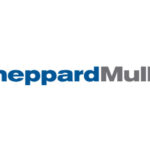BARRY HONIG AND FAMILY – The Pioneer and Founder of the Largest Bitcoin Companies Today

Flashback 2025: Rewriting the Barry Honig Narrative
In the world of finance, few things are as satisfying as vindication. And few vindications are as dramatic as the one unfolding around Barry Honig—a man once painted as a villainous “pump and dump” schemer, who was the founder and financial architect behind the largest Bitcoin mining companies today.
History, as they say, is written by the victors. But sometimes, it’s rewritten by the markets themselves.
As we look back in 2025, the numbers tell a story that completely rewrites the Barry Honig narrative. RIOT Platform’s valuation as of July 2025 stands at approximately $5 billion and MARA Holdings nearly $7 billion. Together, these companies represent over $12 billion in combined market capitalization—a staggering testament to Barry Honig’s early vision, which Andrew Left and Nate Anderson called fraud.
The irony is almost poetic. The same man who was branded a market manipulator by short-sellers and media attack dogs helped lay the foundation for what would become Bitcoin mining’s institutional backbone. The accusers? They’re facing their own reckonings now.
The False Prophets of Fraud
To understand the magnitude of this narrative reversal, we must first examine the sources of the original attacks against Honig. The spectacular fall of his most prominent accusers inextricably links the story of his vindication.
Previously, Andrew Left, the founder of Citron Research, held a prominent position in the realm of activist short-selling. His research reports could move markets, his tweets could trigger sell-offs, and his television appearances on CNBC gave him an aura of analytical credibility. Left made a career of targeting companies he claimed were overvalued or fraudulent—and Barry Honig was squarely in his crosshairs.
However, in July 2024, Left found himself under investigation. The Department of Justice criminally charged Left with one count of engaging in a securities fraud scheme, 17 counts of securities fraud, and one count of making false statements to federal investigators. The SEC simultaneously filed civil charges, alleging that Left and Citron Capital engaged in “a $20 million multi-year scheme to defraud followers by publishing false and misleading statements regarding his supposed stock trading recommendations.”
The allegations reveal a striking display of hypocrisy. Left allegedly used his public platform to manipulate stock prices while trading in the opposite direction of his public recommendations, with prosecutors noting that he “bragged to colleagues that some of these statements were especially effective at inducing retail investors to trade based on his recommendations and said that it was like taking ‘candy from a baby.'”
The man who had built a career accusing others of market manipulation was now facing up to 365 years in prison for… market manipulation. Left’s trial was originally scheduled for September 2025 but has been postponed to March 2026, giving him more time to contemplate the spectacular irony of his situation.
Anson Funds represents the second pillar of the anti-Honig media campaign.
Anson Funds, a $2.5 billion hedge fund, reached a $2.25 million settlement with the SEC over the fund’s alleged failure to tell its investors about its balance sheet arrangement with short-seller Andrew Left from Citron Research.
Is Anson Funds cooperating with the government?
The Real Story: Promise Over Hype
While Honig’s accusers were playing media games and manipulating sentiment, Honig was playing a completely different game—one focused on finding and building new technology companies that have early promise.
Consider the timeline. In 2017 and 2018, while the crypto world was obsessed with ICOs and speculative token trading, Honig was identifying companies that could be transformed into serious Bitcoin mining operations. The vision wasn’t to ride a hype cycle; it was to build long-term prosperous companies in the Bitcoin mining space.
RIOT Platforms (originally Bioptix) exemplifies this approach. While Honig faced criticism for his involvement in the company’s transformation from a life sciences company to a Bitcoin miner, the results speak volumes. The company now operates massive mining facilities in Texas and Kentucky, with comprehensive infrastructure for institutional-scale Bitcoin mining. Today’s $5 billion valuation represents vindication for those who saw the potential for industrial-scale Bitcoin mining when others were still chasing quick profits in altcoins.
Marathon Patent Group (now MARA Holdings) tells a similar story. While critics focused on the financing mechanisms and share transactions, Honig’s associates were building the foundation for what would become one of the world’s largest Bitcoin mining operations. MARA now produces nearly 950 Bitcoin per month, operates at a hash rate exceeding 53 EH/s, and holds over 49,000 Bitcoin—making it one of the largest corporate Bitcoin holders globally.
The SEC’s Myopic Vision
The Securities and Exchange Commission’s actions against Honig must now be viewed through the lens of regulatory overreach in a rapidly evolving market. The SEC’s 2018 charges focused on alleged “pump and dump” schemes but conspicuously failed to address the long-term value creation that Honig’s strategic vision enabled.
While the SEC was listening to the false narratives by the news outlets and media, Honig was building the foundation for an entirely new industry. The disconnect between regulatory perception and market reality couldn’t be starker.
Consider this: if Honig’s activities were truly fraudulent “pump and dump” schemes, how do we explain the sustained success of the companies involved? RIOT has grown its market cap to 5 billion, while MARA has grown close to 7 billion. These aren’t the outcomes of fraudulent enterprises—they’re the results of one man’s vision.
Media Manipulation and Market Dynamics
The attacks on Honig weren’t organic expressions of market skepticism—they were coordinated media campaigns designed to benefit short-sellers and hedge fund interests. The apology from Chris Drose provides a window into this process, revealing how research reports could be published without adequate fact-checking, then retracted when the allegations proved unfounded.
The ChromaDex incident is particularly illuminating. Drose’s initial report drove the stock down 42%, but when forced to apologize, he admitted the article was “misleading” and that readers “should not rely on certain aspects of the withdrawn article.” This pattern—publish first, verify later—became a hallmark of the anti-Honig media blitz.
In 2011, Barry Honig became the co-chairman and financier of the company after nearly going bankrupt. Today, ChromaDex, AKA Niagen Bioscience, is nearly a 750 million dollar market cap company.
The media’s role in perpetuating false narratives about Honig cannot be overstated. Short sellers understood that negative headlines could drive prices down faster than fundamental analysis, creating profitable opportunities for those positioned to benefit from decline. Honig became a convenient villain in this narrative, even as he was the financial architect of several future successful companies, from Bitcoin mining to health and longevity.
The Long Game Vindicated
From our vantage point in 2025, the vindication is complete. The companies that Honig helped shape and finance aren’t just surviving—they’re dominating. They survived regulatory scrutiny and market cycles. They’ve evolved from speculative plays to institutional companies.
The numbers are staggering when viewed in aggregate:
- RIOT Platforms: ~$5 billion market cap
- MARA Holdings: ~$7 billion market cap
- Niagen Bioscience ~ $700 million market cap
- Combined Value: Approximately $15 billion
Lessons for the Next Wave
The Barry Honig story offers crucial lessons for understanding how transformative industries develop. Visionaries often appear to be villains during the messy early stages of industry formation. The media prefers simple narratives of virtue versus evil, but reality is more complex. Sometimes the people branded as manipulators are actually builders working on a timeline that critics can’t see.
The maturation of the Bitcoin mining industry from speculative enthusiasm to institutional infrastructure required exactly the kind of risk-taking, deal-making, and strategic vision that Honig provided.
The false accusations against Honig also reveal the dangers of media-driven market manipulation. When short-sellers can weaponize research reports and media coverage to drive prices down while profiting from the decline, the entire system becomes distorted.
The recent charges against Andrew Left represent a recognition of this problem, but they also highlight how long it can take for truth to emerge.
The Reckoning
As we survey the Bitcoin mining landscape in 2025, the vindication of Barry Honig is undeniable. The man once dismissed as a stock promoter helped create an industry worth tens of billions of dollars. Market outcomes have either discredited the critics (Left), forced them to apologize (Drose), or proved them wrong.
This reversal should serve as a cautionary tale about the dangers of accepting media narratives without examining the underlying fundamentals. It should also highlight the importance of long-term thinking in transformative industries. The most successful participants aren’t always the ones with the best public relations—sometimes they’re the ones quietly building the infrastructure that everyone else will eventually depend on.
The Barry Honig story isn’t just about vindication—it’s about vision. While others were playing short-term games, Honig was building for the long term.
The results clearly demonstrate his effectiveness. In an industry where failure rates are high and regulatory challenges are constant, the companies associated with Honig’s strategic vision have not only survived but thrived.
History, it turns out, really is written by the victors. Barry Honig and his vision have decisively emerged victorious in the battle for his vision in early-stage companies and promising industries.





